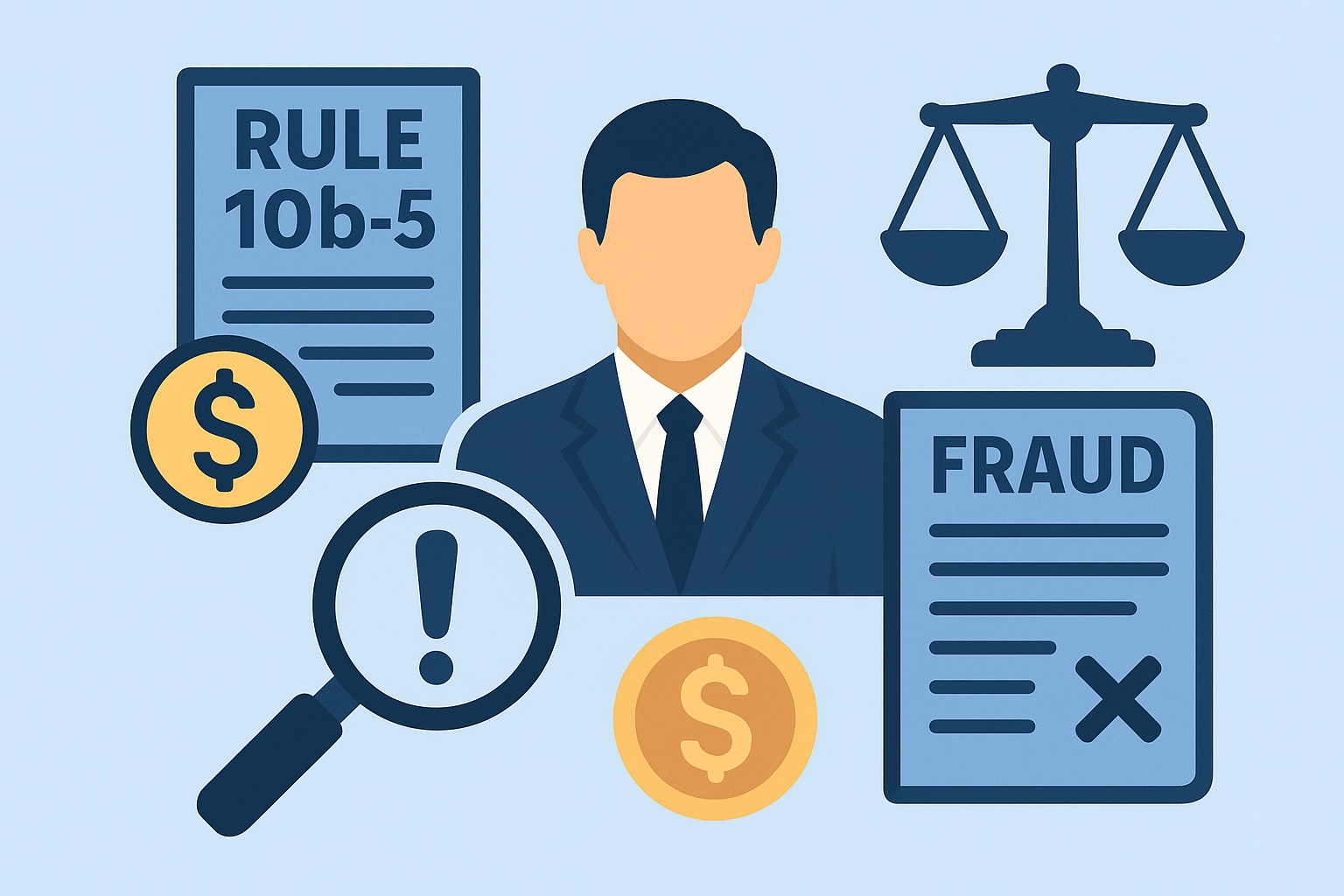Rule 10b-5 Lawsuits Explained: How to Prove Damages in an Investment Fraud Case (Part V of IV)
Why Proving Damages Matters in Securities Fraud
If you’ve been the victim of investment fraud, knowing how to prove damages can make or break your case. While it may be straightforward to show that a misrepresentation occurred, courts require something more: proof that the fraud caused your financial losses. This is where the concept of proximate cause comes in, and it is one of the most heavily contested elements in a Rule 10b-5 lawsuit.
Hiring an experienced investment fraud attorney can be the difference between a dismissed case and a successful recovery.
Overview of Rule 10b-5 Violations
What is the Securities Exchange Act of 1934?
The Securities Exchange Act of 1934 created the foundation for modern securities regulation in the United States. It was designed to prevent manipulation, fraud, and unfair practices in the securities markets following the 1929 stock market crash.
Understanding Rule 10b-5
Adopted by the Securities and Exchange Commission (SEC), Rule 10b-5 prohibits fraud, misrepresentation, and deceit in the purchase or sale of securities. It is one of the most frequently cited provisions in securities fraud lawsuits.
The Six Core Elements of a Rule 10b-5 Claim
To succeed in court, a plaintiff must prove these elements by a preponderance of the evidence:
- Use of Interstate Commerce – Defendant used an instrumentality of interstate commerce (phone, internet, email, or mail).
- False Representation or Omission – Defendant misrepresented or concealed a material fact about a security.
- Defendant’s Knowledge or Recklessness – Defendant acted knowingly or with severe recklessness.
- Justifiable Reliance – Plaintiff reasonably relied on the false information.
- Damages as a Proximate Result – Plaintiff’s losses directly stemmed from the fraud.
Deeper Dive: The Fifth Element – Proximate Cause of Damages
Legal Definition of “Proximate Cause”
Proximate cause means that the misrepresentation or omission must be a substantial or significant contributing factor in the plaintiff’s financial losses.
The “But For” Test Explained
Courts often ask whether the plaintiff would have suffered losses if the defendant had not engaged in fraud. If the answer is “no,” then the court establishes proximate cause.
Substantial or Significant Contributing Cause
Importantly, the fraud does not need to be the only cause of damages—just a major contributing factor.
Common Defense Arguments Against Proximate Cause
Defendants often argue that external market forces (like recessions or interest rate changes) caused the plaintiff’s losses—not the alleged fraud. This is why proving proximate cause is often the most hotly contested part of a securities fraud case.
Real-World Examples of Proximate Cause in Securities Fraud
Misrepresentation of Financial Statements
When a company inflates earnings to attract investors, and stock prices collapse once the truth emerges, the fraud establishes proximate cause.
Concealing Insider Information
When insiders hide poor performance data and investors suffer losses after the truth is revealed, the fraud directly links to the damages.
Pump-and-Dump Schemes
Fraudsters artificially inflate stock prices, sell off shares, and leave investors with heavy losses—classic proximate causation.
How Courts Analyze Proximate Cause in Rule 10b-5 Cases
Burden of Proof on the Plaintiff
The plaintiff must show a clear, causal link between the misrepresentation and the financial harm.
Role of Expert Testimony
In many cases, financial experts testify to explain how the fraud influenced stock prices or market behavior, strengthening the claim of proximate cause.
FAQs About Rule 10b-5 Lawsuits and Investment Fraud
1. Do I need to prove intent in a Rule 10b-5 case?
Yes, you must show that the defendant acted knowingly or with severe recklessness.
2. How the Court determines “material fact” in securities fraud?
A material fact is one that a reasonable investor would consider important when making an investment decision.
3. What damages can I recover in an investment fraud lawsuit?
You may recover out-of-pocket losses, lost profits, and sometimes interest or attorneys’ fees.
4. How long do I have to file a Rule 10b-5 lawsuit?
Generally, plaintiffs have two years from discovery of the fraud or five years from the violation—whichever comes first.
5. Can the court hold multiple defendants liable?
Yes, if multiple parties participated in or benefited from the fraud, courts may hold them jointly liable.
6. Why should I hire an investment fraud attorney?
Investment fraud cases are complex, requiring detailed evidence and expert testimony. An experienced attorney can build a strong case and maximize recovery.
Protecting Your Rights with an Investment Fraud Attorney
Proving damages in a Rule 10b-5 lawsuit is no easy task. Plaintiffs must go beyond showing misrepresentation—they must connect that fraud to actual financial losses through proximate cause.
If you suspect you’ve been the victim of securities fraud, don’t wait. Speak with a qualified investment fraud attorney who can help you navigate the legal process and fight for the compensation you deserve.
🔗 For more background on securities fraud laws, visit the SEC’s official site.


